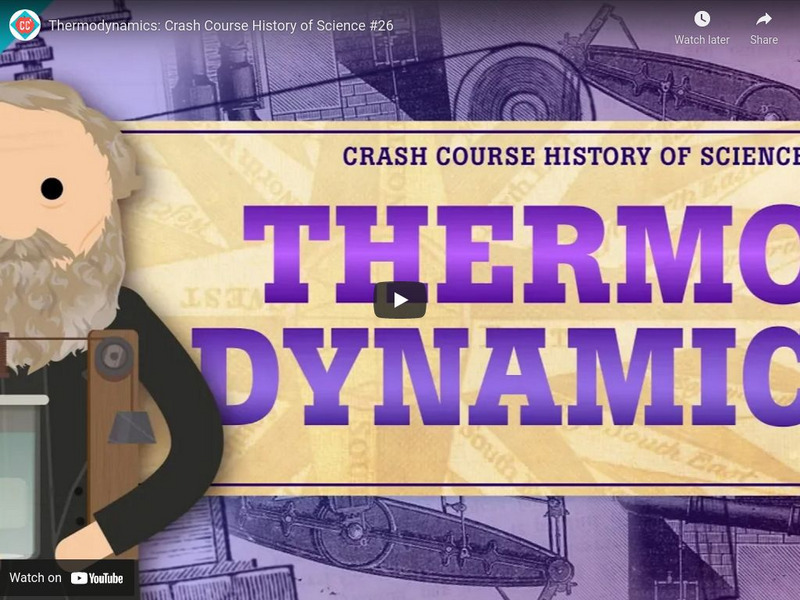Curated Video
Explaining Electrical Charging: Conductors, Insulators, and Electrostatic Phenomena
This video explains the difference between electrical conductors and insulators, and how insulators can be charged by friction. It goes into detail about the movement of electrons and how charges can be conserved. The video also...
Physics Girl
Avoid electric shock getting out of a car!
As the weather gets colder and dryer, you are more likely to get shocked when getting out of a car, touching a door knob, or doing laundry. Is there a way to prevent getting shocked on the car door?
Science Buddies
Basic Circuits Kit: Conductors and Insulators
This video shows how to use a few simple materials (lightbulb, batteries, and alligator clips) to create a circuit to light up a lightbulb. From there, the video shows how to use the circuit to experiment and determine if various...
Flipping Physics
Electric Charges and Electric Fields - Review for AP Physics C: Electricity and Magnetism
My review of the entire AP Physics C: Electricity and Magnetism curriculum begins here with electric charge, the Law of Charges, Coulomb’s Law, conservation of charge, charging by friction, electric fields around point charges, the...
Professor Dave Explains
Conductivity and Semiconductors
Why do some substances conduct electricity, while others do not? And what is a semiconductor? If we aim to learn about engineering and technology, this will be a very important concept, so let's go through the basics now!
Physics Girl
Avoid Electric Shock Getting Out of a Car!
Can you avoid static shocks? As part of a larger physics series, an electric video explains what a static shock is and why it happens. Then, the narrator offers an idea for reducing your shock when exiting a car. She also includes a few...
PBS
Conductors and Insulators: Materials and Design | UNC-TV Science
Does a material encourage or discourage the flow of thermal energy? Pupils learn that the answer determines whether a material is a conductor or insulator in a concise video presentation. The lesson also includes several examples of...
Veritasium
World's Lightest Solid!
The world's lightest solid is over 99 percent air. An episode of the Veritasium series examines the structure of the aerogels and their physical and chemical properties. The video shows several demonstrations that show these properties...
Crash Course
Electrical Power, Conductors, and Your Dream Home: Crash Course Engineering #21
Have young engineers always wondered how a light bulb works? Now's their chance. Viewers of an illuminating YouTube video learn about electric current, conductivity, and resistance. They see how engineers use low-conductivity conductors...
TED-Ed
What in the World Is Topological Quantum Matter?
Time to expand your thinking! A video lesson begins with an explanation of topology and its application to new technology. The narrator shares examples of electron transfer of electricity and data storage in computers.
Fuse School
Conductors and Non-Conductors
To conduct or not to conduct ... that is the question! The sixth and final video in a series depicting elements, mixtures, and compounds digs deeper into the concept of conductivity. Pupils learn how the arrangement of electrons within a...
Fuse School
Giant Chemical Structures - Part 2
This lesson's gonna be huge! The fifth of a six-part series discusses the formidable lattices created by ionic compounds, as well as bonding in metallic elements. Chemistry scholars learn the properties of both types of substances and...
SciShow
The 2016 Nobel Prizes: Chemistry and Physics!
Tiny discoveries won big at the 2016 Nobel prize ceremony, recognizing chemists who developed new machines out of molecules and pushed the limits of nanotechnology. Individuals see how physicists created new materials through topology...
DoodleScience
U-Values and Specific Heat Capacity
If you want to keep warm, learn how chemistry can help you choose materials when building a house. The video informs pupils how to interpret a u-value in relation to a given material. In addition, the instructor explains specific heat...
Curated OER
Electroscope Experiment: Opposites Attract, Likes Repel
Have your young scientists create electroscopes and conduct an experiment using various types of materials (some conductors, some insulators). What happens to the electroscope when each object is passed through its plastic pieces?
Curated OER
Liquid Nitrogen Experiments: Insulators
What is an insulator? What materials make the best insulator? Watch as Joanne and Steve conduct a simple experiment to see if a plastic cup insulates better than a styrofoam cup. Make a prediction: which do you think will be the better...
Massachusetts Institute of Technology
Mit: Science Out Loud: What Is a Semi Conductor
Semiconductors are in everything from your cell phone to rockets. But what exactly are they, and what makes them so special? Find out from Jamie, a Ph.D. student in Electrical Engineering and Computer Science at MIT. [4:45]
Other
Neo K12: Which Is the Better Insulator?
Learn about insulators while watching an experiment. Two plastic cups full of water are placed into bowls of liquid nitrogen. Which cup will insulate best?
Crash Course
Crash Course History of Science #26: Thermodynamics
It's time to heat things up! LITERALLY! It's time for Hank to talk about the history of Thermodynamics!!! It's messy and there are a lot of people who came up with some ideas that worked and others that didn't and then some ideas that...














